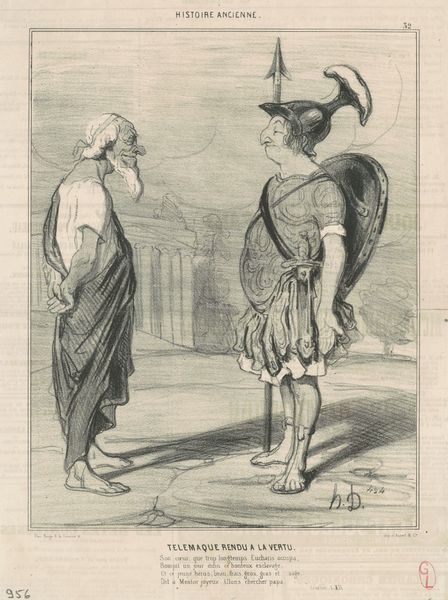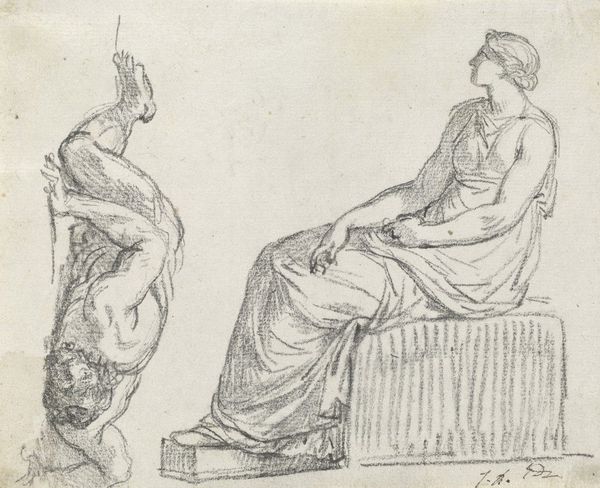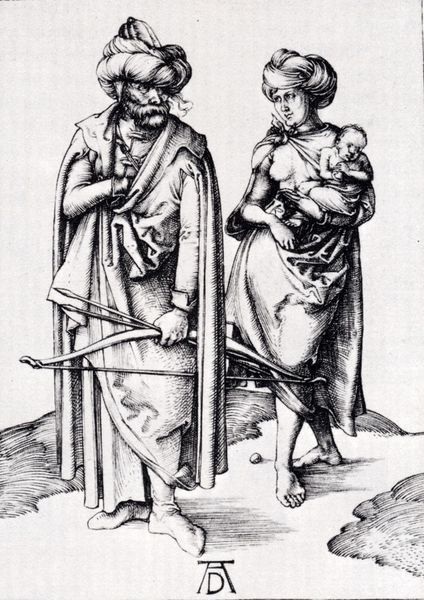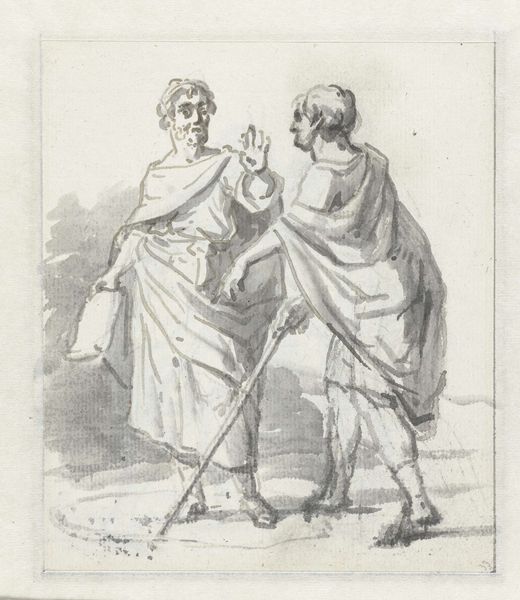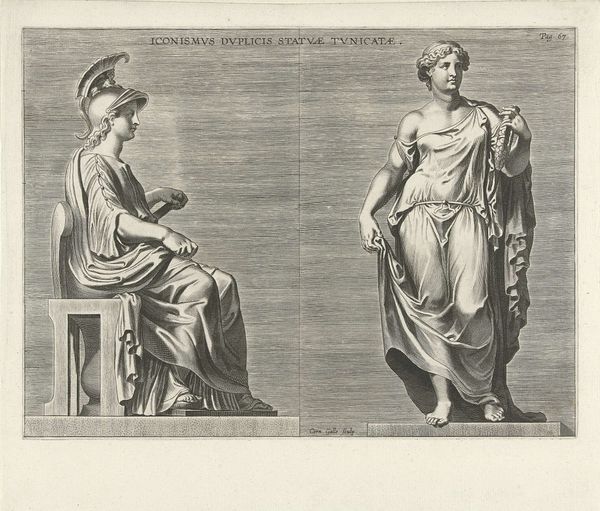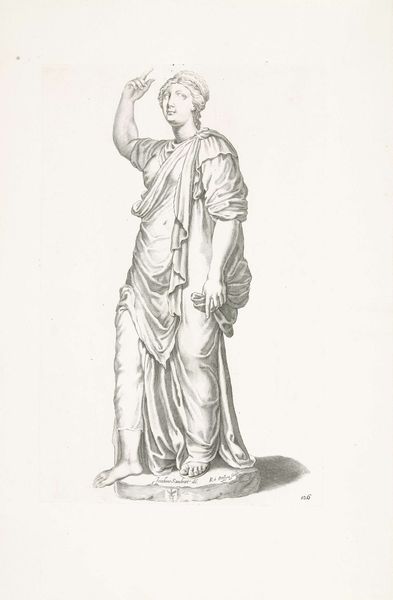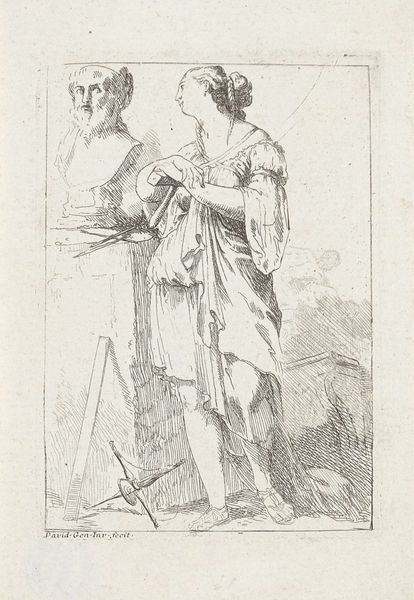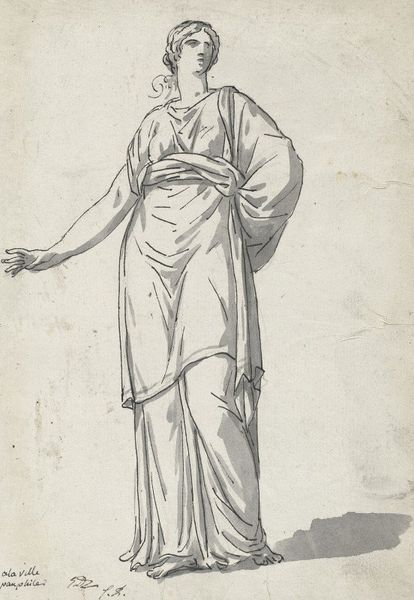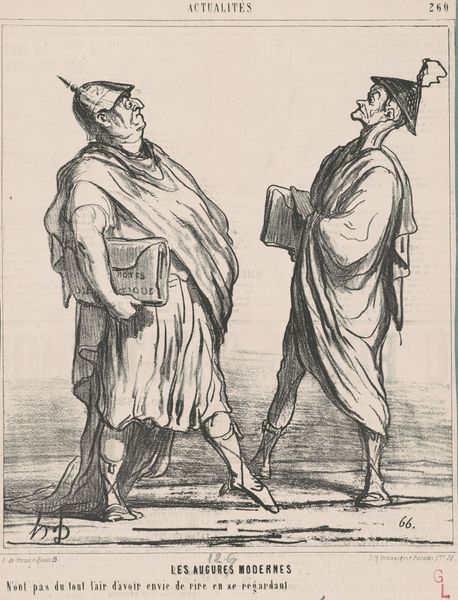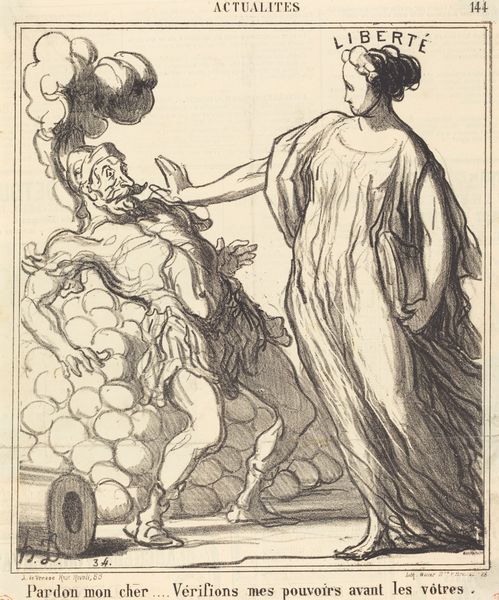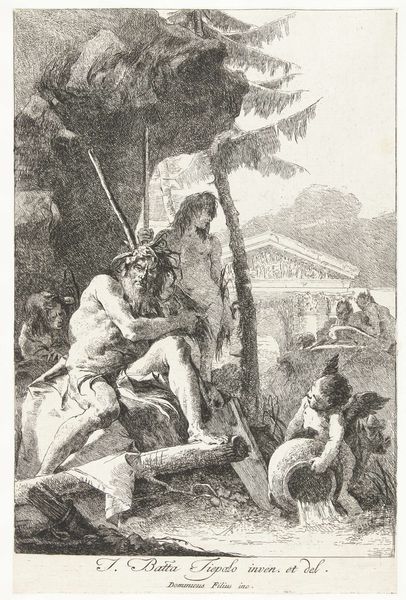
drawing, paper, ink
#
portrait
#
drawing
#
neoclacissism
#
allegory
#
narrative-art
#
landscape
#
paper
#
ink
#
geometric
#
classicism
#
history-painting
Copyright: Public domain
Curator: Let's look at John Flaxman's "Hermes Orders Calypso to Release Odysseus," a work from 1793 rendered in ink on paper. My first impression? Stripped down and austere. Editor: Stripped, yes, but powerfully so! The absence of color focuses the eye on the dynamism of the forms. You immediately grasp the tension and divine authority. Curator: Absolutely. Flaxman, deeply influenced by Neoclassicism, taps into a cultural memory of clarity and order. Look at how Hermes strides in, every line conveying urgent purpose. The caduceus and winged sandals are clear indicators of his role, universally understood symbols. Editor: Observe the linear purity! He’s achieved an impressive sculptural quality using only line. Hermes advances left to right, while Calypso resolutely faces right. It's almost a binary opposition created purely through posture and direction. Curator: That opposition speaks volumes. Hermes represents divine will and the imperative to set Odysseus free – breaking the seven-year captivity. Calypso’s crossed arms express her resignation, the reluctant yielding to fate. It speaks to timeless themes of duty, free will, and divine intervention. Editor: The horizontal hatching across the background plane reinforces this feeling. It is like Hermes quite literally walks toward the viewer and right off the flat, dimensionless ground of the drawing. His diagonal movement, his almost performative drapery, is highly evocative. Curator: The domestic implements—the tables and chairs—contrast so starkly with Calypso's grief; as an iconographer, this reads as her domesticity contrasted with an unwillingness to depart from her emotional connection with her captive. There's a sense of forced severance from what once brought comfort and happiness, adding depth to the overall tragic narrative. Editor: An insightful reading. Overall, there's an amazing strength in this seemingly simple drawing—the dynamism created out of minimalist means. Curator: It has invited me to reconsider those emotional burdens represented by material items like her abandoned tables and chairs. Editor: It’s certainly a rewarding study in line, form, and the enduring power of classical narratives.
Comments
No comments
Be the first to comment and join the conversation on the ultimate creative platform.
